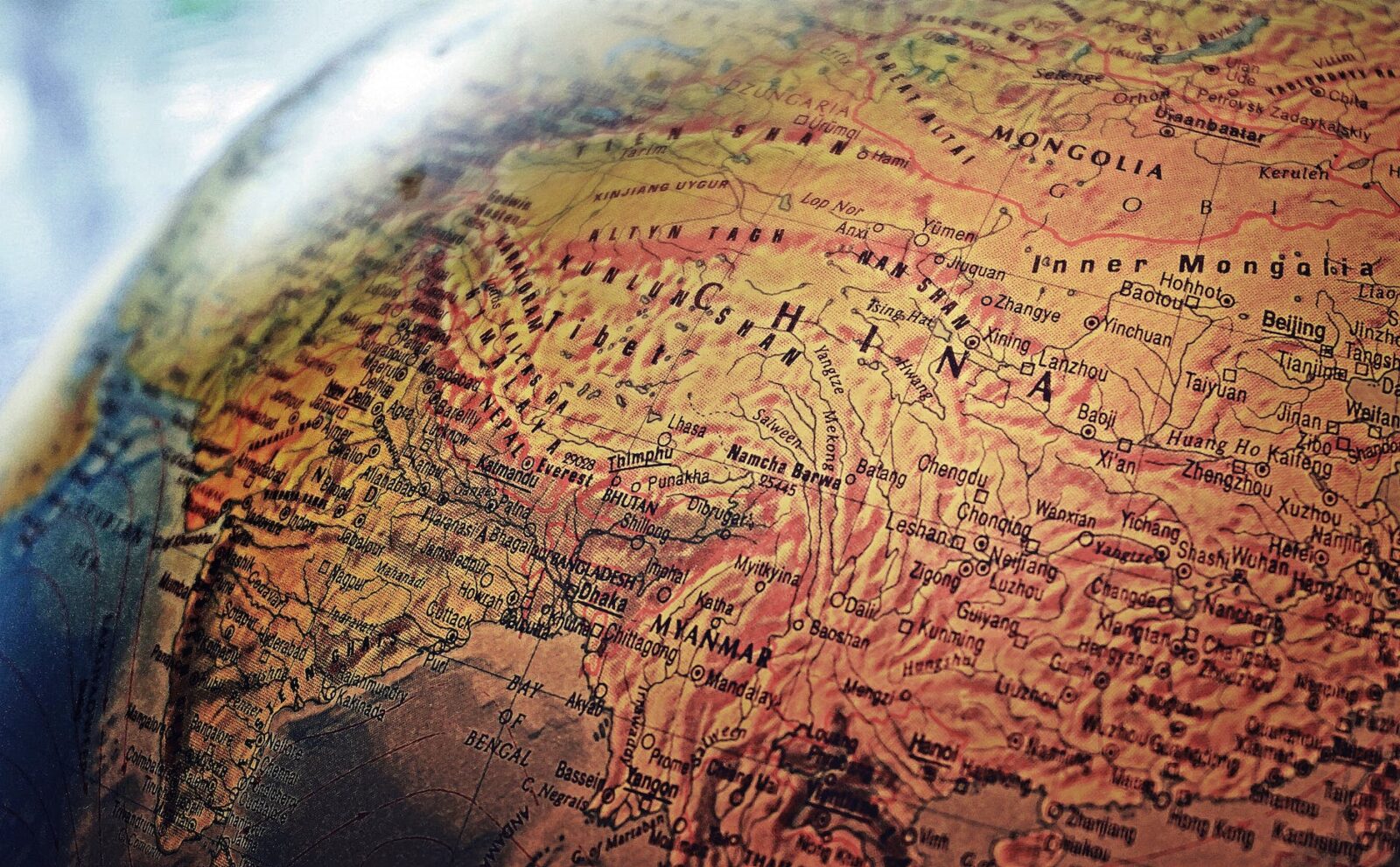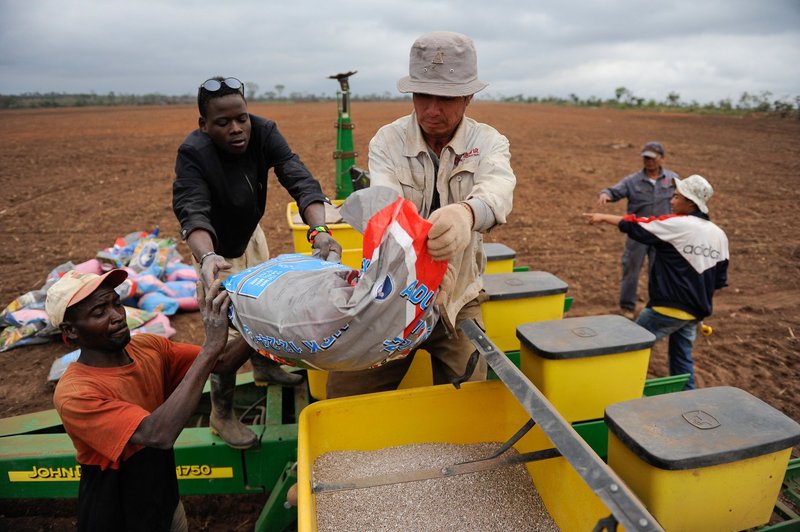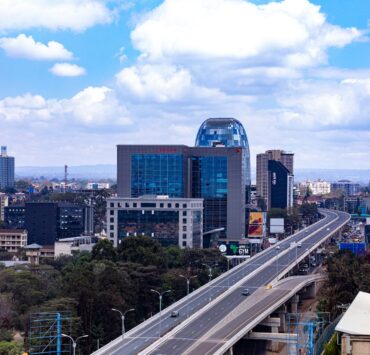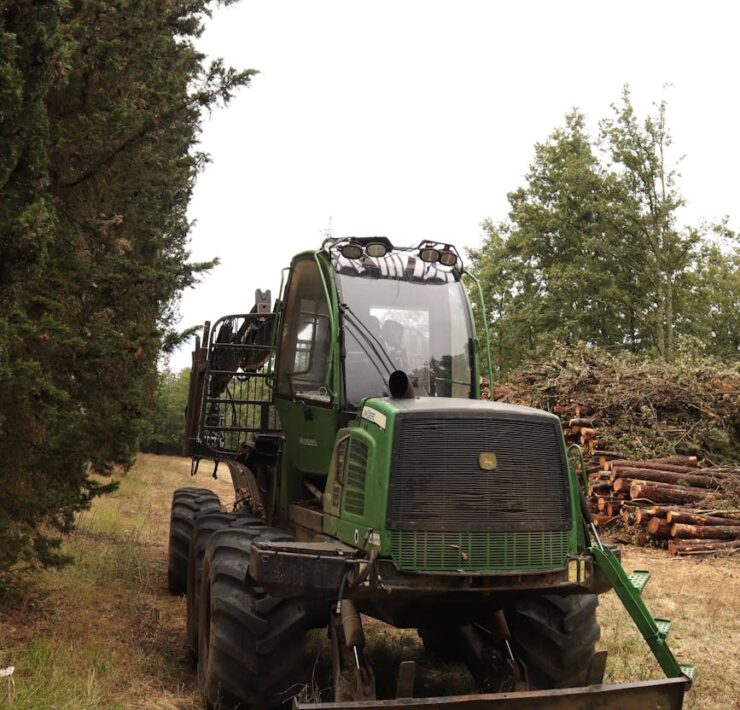Expanding markets, undermining food sovereignty: 10 years of China’s Belt and Road

GRAIN is a small international non-profit organisation that works to…

In October 2023, delegates from 140 countries met in Beijing to mark the 10th anniversary of China’s Belt and Road Initiative (BRI). Against the backdrop of China’s economic challenges and tensions with the US, the Third BRI Forum supposedly marked a shift away from major overseas investments in large-scale projects. The Belt and Road Initiative would now allegedly focus on smaller-scale, greener projects. However, with one big exception: food and agriculture. China’s food trade with BRI partners actually surged by 162 per cent in the last decade, reaching USD 76.10 billion.[1]
Supporting the trend, since 2018, China has been the leading country providing investments internationally to agriculture, averaging USD 1.71 billion annually.[2] Yet, in this BRI food trade push, China might not be seeing the forest for the trees. While China has made significant strides in securing control over its overseas food supply through BRI investments, its dependence on food imports has grown.
Parallel to this trend, is the expanding involvement of Chinese corporations through BRI across the global food chain, from seeds to processed foods. Three main areas are of particular concern: increasing agriculture imports from Africa; the seizing of dwindling fish stocks; and the expansion of e-commerce.
Sowing export agriculture in Africa
Over the past decade, China has made a major departure from its traditional model of China-Africa cooperation in the roll out of its BRI agriculture projects in Africa. Previously, China-Africa cooperation was mainly about sharing knowledge, and it did it through showcasing technology and providing aid for the construction of public works (like irrigation schemes) promoting agriculture for food. The BRI approach, however, referred to as “agriculture for profit”, has operated through massive private or state-owned companies and has coupled the financing of transportation infrastructure projects (like rail and ports) with projects to industrialise African agriculture through hybrid seeds, machinery, logistics, food storage and processing facilities provided by Chinese companies.
In 2021, a China-Africa Economic and Trade “Deep Collaboration Zone” was set up in Hunan province that contains a processing and trade centre for African agro-products. The centre recorded USD 400 million in trade for the first year and aims for USD 14 billion in trade with Africa by 2025.[3]
China’s confidence in its practices of fast economic growth attempts to present a template for African countries to follow under the BRI. Through its massive communication network, the BRI is promoting agriculture capitalisation as a successful means to eradicate poverty.
China’s agricultural intentions in Africa are mainly concerned with its soaring domestic meat consumption and support of its factory farming of poultry and pigs, which has created a huge demand for imported soybeans and maize for animal feed. The US and Brazil have long been China’s dominant suppliers of soybeans and maize, but, with growing tensions with the US and other volatilities in production and trade such as Covid and climate change-induced droughts, the government is looking to diversify its supply sources.
Over the past decade and a half, there have been numerous attempts by Chinese agribusinesses to invest in large-scale farming projects in Africa. However, these have not resulted in a significant amount of exports to China, and many of the projects have failed to even get off the ground.[4] Nevertheless, at the China-Africa Leaders’ Roundtable Dialogue in Johannesburg in August 2023, President Xi Jinping emphasised that China would continue to try and develop large-scale crop farming on the continent. He also stressed that importance would be given to build up seed production capacity and seed markets for its corporations.[5]
China’s largest seed company, Yuan Longping High-Tech Agriculture, a subsidiary of the state-owned conglomerate CITIC, has been tasked with leading this effort in Africa. In Tanzania, the company is pursuing a major effort to develop soybean production for export. In 2022, the Tanzanian government provided it with 53,000 hectares for a large-scale farming operation in the Chunya District of the Mbeya Region and in 2023 it fast-tracked the approval of the company’s seed varieties.[6] In preparation, Beijing’s cleared several companies for the export of soybeans from Tanzania, and a first shipment was carried out by the giant state grain trader and food company, COFCO, which plays a central role in the BRI’s food and agriculture projects around the world.
Both Longping High-Tech and COFCO are also actively developing exports of soybeans in the West African country of Benin, which along with Tanzania and Ethiopia, was recently singled out by China for the development of soybean exports. China and Benin signed a protocol on the export of soybeans in September 2019 and, by 2022, Benin’s annual exports to China exceeded 210,000 tonnes, accounting for over 60 per cent of its total soybean exports.[7] The exports are mainly handled by COFCO’s local subsidiary, Chinatex.
Benin is also a target for maize exports. While maize is a staple food in Benin and is grown widely across the country, it is almost entirely consumed locally. Longping High-tech is trying to change this and develop a surplus for export through a programme supported by China’s Ministry of Commerce, that is training farmers in growing its high-yield hybrid maize varieties, and then distributing them to other farmers for widespread cultivation. [8]
Longping High-Tech’s global seed dominion
So far, Longping High-Tech has focused on developing the production of non-GM seed varieties in Africa. But, over the years of support through the BRI programme and its take-over by the Chinese state conglomerate CITIC in 2015, it has emerged as one of the world’s largest seed companies, with a similar interest in the development of GM seeds to its competitors.[9] Longping High-tech has expanded particularly rapidly in South America and is now the third-largest maize seed company in Brazil, where it has developed an extensive holding of tropical maize and soybean germplasm that it is now using for its operations in Africa. In December 2023, eight varieties of GM maize owned by Longping High-Tech were approved by the National Seed Approval Committee for commercial planting in China. It is speculated that the decision is to boost domestic feed production. [10]
Other crops for export to China, beyond maize and soybeans, are also being supported in Africa through the BRI. China has recently put in place new sanitary and phytosanitary mechanisms to streamline the cross-border flow of agricultural products and increase the range of products covered under food safety regulations– from seafood to avocados to cotton. [11] [12]
From land to sea
The massive size of China’s food market means that any small fluctuations in trade can have major impacts on global prices. This is why much of China’s overseas food strategy has focused on trying to minimise such price fluctuations by boosting global production of the crops it imports through technology and mechanisation.
This approach doesn’t hold with the fishery sector. China’s rapidly expanding fleet of deep-sea trawlers as a techno-fix to deal with the decline in global fish stocks is actually playing a major role in accelerating the depletion. Having badly overfished their own coastal waters, Chinese companies are sending their giant trawlers further and further overseas, bringing them into increasing conflict with coastal communities who depend on these same waters for their livelihoods and food needs.[13]
At the October BRI Forum, the Chinese government maintained that it wanted to pursue international collaboration to support the sustainable use of marine resources, under what it described as a renewed “blue economy initiative”. But, evidence from the ground indicates that China is not really interested in reversing its course. Instead, it is moving ahead with BRI projects that increase the presence of Chinese vessels in the waters of coastal countries where marine resources are already contested.
Under current BRI projects, Chinese fishing companies are encouraged to leverage BRI investments in harbour infrastructure to gain more fishing access in foreign countries at the expense of local fishing communities and the sustainability of local marine resources.[14] In Somalia, for instance, China Beijing Chaoliang Holdings Group and the Somali government signed the China-Somalia International Fisheries Cooperation deal in November 2022, as part of the BRI framework. Under the agreement, the Chaoliang Group committed to a one-year investment in Somalia’s fish processing facilities and tuna production, and in return, it received fishing licences for operation along the coast of Somalia and access to coastal waters for a deep-sea aquaculture project that it also intends to develop.[15] [16]All the fish harvested by Chaoliang will be shipped back to China and processed and stored in the facilities the company intends to build in Shanghai, Guangzhou, and Changsha.
Somalia has the longest coastline of any African nation. But the local small-scale fishing communities that live along the coast are already suffering from overfishing by foreign vessels, including many Chinese-owned vessels. Chinese fishing companies started moving into Somali waters in a big way after December 2018, when the Somali government issued renewable annual fishing licenses to 31 vessels that are part of the China Overseas Fisheries Association. Although the licenses only allowed Chinese vessels to operate 24 nautical miles away from Somalia’s coast, the local fishing communities say that their government is not able to stop vessels from encroaching this boundary. [17] The new deal with Chaoliang Group under the BRI framework will only worsen the situation.
In Pakistan, a major project of the China-Pakistan Economic Corridor (CPEC), which is part of the BRI, is the development of a massive deep-sea port in the fishing village of Gwadar in Balochistan that will connect by rail and road to China’s Xinjiang region. The project, which gives control of the port to Chinese companies, has also brought an influx of Chinese fishing trawlers to the area. One of the Chinese companies now fishing the waters off of the Gwadar coast is Fujian Hengli Fishery, which is known for its illegal, unregulated and unreported fishing in West Africa, with evidence of various infringements including illegal nets, shark finning and fishing without licences.[18]
The presence of Fujian Hengli and other Chinese fishing companies is already having major impacts on local fishing communities, who say the giant vessels are wiping out their fish stocks, out-competing their local fishing boats and destroying their livelihoods.[19] In December 2022, the Haq Do Tehreek (Gwadar Rights Movement) led a two-month protest to demand an end to deep-sea fish trawling by Chinese vessels and, together with thousands of people from local small fishing communities, staged a blockade of the port.[20] Despite the strong community resistance, the Chinese companies are eager to fish in Pakistan’s waters as they can sell the catch back home duty-free.
E-commerce: a speed train for agribusiness
As China moves away from the BRI’s previous focus on large-scale, debt-laden infrastructure investments, support for digital trade infrastructure and the accompanying opportunities with e-commerce are moving up the agenda. At the 2023 BRI Forum, Beijing indicated that it was looking to e-commerce as the vehicle that bring food from BRI nations to the bowls of Chinese consumers.
E-commerce is booming in China, thanks to the rapid adoption of smartphones, widespread internet access, and the availability of digital payment systems such as Alipay and WeChat Pay. China’s zero-Covid policy gave an especially big boost to e-commerce in the food sector. During the Covid period, e-commerce platforms like JD.com, Meituan, Alibaba and PingDuoDuo were authorised to supply food to urban communities. Fresh produce such as vegetables, fruit and meat often made up the majority of the delivery, as residents were not allowed to go out for two to three weeks if their residential area was under quarantine. Added to this, many wet markets and street vendors were forced to close.
After the zero-Covid policy was lifted, China’s digital giants immediately launched different promotional plans to retain their consumers in different cities, establishing community agents to promote and coordinate collective buying among neighbours. Numerous pick-up stations have been set up in residential or business areas, supplying huge amounts of fresh food, including meat, seafood, vegetables and fruits.
To deal with growing competition, China’s e-commerce food sector giants are looking to diversify their products by importing premium agricultural products from Southeast Asia such as Thailand, Malaysia and Cambodia, and are advocating for mechanisms within the BRI to facilitate this. To date, China has established bilateral e-commerce cooperation mechanisms with over 30 countries, prioritising Southeast Asia because of its proximity and large Chinese diaspora.[21]
One recent BRI e-commerce project was established in Cambodia. In June 2022, China’s Jiangsu Province launched a “Silk Road E-commerce” project that it said would enable Cambodian small and medium-sized enterprises to export high-value agricultural products to the Chinese market.[22] But, so far, the visible beneficiaries are major Chinese companies and powerful Cambodian businessmen with large agricultural holdings.
The Silk Road E-commerce project runs through JD.com, China’s largest e-commerce platform, and is overseen by the China-based conglomerate Jiangsu Taihu (Cambodia) International Economic Cooperation Zone Investment Co., which is also the operator of the largest industrial park in Cambodia, the Sihanoukville Special Economic Zone (SSEZ). The SSEZ is a joint venture between Jiangsu Group and a Cambodian company, Cambodia International Investment and Development Group (CIIDG), that is owned by Cambodian Senator Lao Meng Khin’s family, according to the Cambodian company register.[23] [24] The senator’s family has extensive business interests in agriculture and owns a large number of agricultural concessions.[25]
In Thailand, the BRI’s integration of industrial and digital investments is also shaping new agricultural trade routes for China’s e-commerce giants. In June 2023, Hongjiu Fruit, China’s largest fruit trader and distributor, imported 500 tonnes of fresh durians from Thailand. It was the first shipment of Thai durian delivered through the new western land-sea corridor railway system, a signature BRI project connecting Western China with Southeast Asia with an operation centre in the Southwestern Chinese city of Chongqing, where Hongjiu Fruit is based.[26]
One of Honjiu Fruit’s top shareholders is China’s leading online wholesale marketplace, Alibaba, which also has a strategic partnership with Hongjiu Fruit through its supermarket chain Freshippo.[27] Honjiu Fruit is growing rapidly, with its 2022 profits four times that of the previous year’s. The two companies are aiming to use the BRI as a means to deepen their reach, not only into orchards across Southeast Asia, but into other major fruit exporters that are part of the BRI, like Chile where they have started importing cherries.[28]
The road ahead
Ten years into the Belt and Road Initiative projects, the expansion of corporate investments in the global agri-food system has reached new heights. As evidenced by China’s plans in agriculture, fisheries and e-commerce in Africa and Asia, it is hard to find anything “green” or small-scale about the BRI. On the contrary, it is only leading to further grabbing of limited natural resources for the profit of China’s corporations, while millions of peasants, fisherfolks and others are left under the thumb of its agribusiness and digital giants.
China seems to be caught in a vicious cycle: the more its BRI expands with its large-scale agricultural techno-fixes, the more dependent it becomes on food imports, increasingly undermining its own food sovereignty.
“Agriculture for profit” is not only an economic gamble, but also a social and environmental one – for China and its BRI partners. The global scramble for resources seems to leave few alternatives, but they are there and have proven to be efficient. It is not too late for China to strengthen support for its small-scale farmers and focus on providing both urban and rural communities with decentralised food, systems to achieve food sovereignty.
____________________________
Banner photo: Africa ANGOLA Malanje Black Stone Farm, a 20.000 hectare farm of chinese company CITIC construction corporation and Angolian agency Gesterra which promotes large scale farms in Angola, seeding of Monsanto hybrid maize along with NPK nitrogene phophate fertiliser with chinese tractor and John Deere seeding machine
[1] Global Times, “China’s food trade with BRI countries soars 162% from 10 years ago”, 15 Sep 2023: https://www.globaltimes.cn/page/202309/1298283.shtml; Cecilia Tortajada, Hongzhou Zhang (2021), When food meets BRI: China’s emerging Food Silk Road, Global Food Security, Volume 29, 100518, ISSN 2211-9124. https://doi.org/10.1016/j.gfs.2021.100518
[2] FAO. 2023. Foreign direct investment flows to agriculture – 2013–2022. FAOSTAT Analytical Briefs, No. 77. Rome. https://doi.org/10.4060/cc9025en
[3] Panda Paw Dragon Claw, 20 Apr 2022: https://pandapawdragonclaw.blog/2022/04/20/agriculture-for-food-plus-agriculture-for-wealth-china-africa-agriculture-cooperation-in-new-cycle/
[4] GRAIN, “The global farmland grab in 2016: how big, how bad?”, June 2016: https://grain.org/e/5492. See the case of Angola discussed in F. Cabral, Y. Changbin, J. Tchantchou Wague, and Y. Yanshu, “Analysis of China–Angola Agricultural Cooperation and Strategies Based on SWOT Framework” Sustainability 15, no. 10, 2023: 8378: https://doi.org/10.3390/su15108378
[5] SCMP, “Xi Jinping pledges more help to Africa in both industrial and agriculture sectors”, 25 Aug 2023: https://www.scmp.com/news/china/article/3232237/xi-jinping-pledges-more-help-africa-both-industrial-and-agriculture-sectors?module=inline&pgtype=article
[6] GRAIN 2023 field investigation
[7] Xinhua, “China-Benin cooperation become stronger on soybean and maize talks”, 3 Sep 2023: https://newsghana.com.gh/china-benin-cooperation-become-stronger-on-soybean-and-maize-talks/
[8] Guangxi Maize Research Institute, “玉米所科技人员应邀为2023年“贝宁玉米高产实用技术海外培训班”授课”, 19 Aug 2023: http://www.gxaas.net/front/detail/127/3454/136365
[9] SCTN, “隆平高科并表隆平发展 玉米年收入突破45亿元”, 2 Nov 2023: https://www.stcn.com/article/detail/1023989.html
[10] Reuters, “China moves closer to commercial planting of GMO corn, soybeans”, 19 Oct 2023: https://www.reuters.com/article/china-gmos-idUKL4N3BP1VF
[11] SCMP, “What stops Africa from exporting more crops to China?”, 5 Dec 2021: https://www.scmp.com/news/china/diplomacy/article/3158480/what-stops-africa-exporting-more-crops-china
[12] AgNews, “China and African countries look to establish mechanism for sanitary and phytosanitary cooperation”, 20 July 2023: https://news.agropages.com/News/NewsDetail—47151.htm
[13] EJF, “Mapping the extent of Chinese ownership and its linkages to IUU fishing amongst Guinea’s trawl sector”: https://ejfoundation.org/resources/downloads/Moore-Briefing-Guinea-v7-1.pdf
[14] Chinese Ministry of Agriculture and Rural Affairs (2017). Thirteen five-year national offshore fisheries development plan: http://www.moa.gov.cn/gk/ghjh_1/201712/ t20171227_6128624.htm
[15] “wasaaradda kalluumeysiga iyo kheyraadka badda iyo shirkadda China Beijing chaoliang holiding oo is afgarad kala saxiixday”, 16 Nov 2022: https://mfmr.gov.so/en/2022/11/16/wasaaradda-kalluumeysiga-iyo-kheyraadka-badda-iyo-shirkadda-china-beijing-chaoliang-holiding-oo-is-afgarad-kala-saxiixday/
[16] 世界渔业, 【索马里】渔业部与北京超粮控股集团达成渔业领域协议, 19 Nov 2022: https://mp.weixin.qq.com/s/q7U9YJRDbufKVZ6X3dly8A
[17] FCWC, “Somali fishermen object to ‘shocking‘ deal allowing China in their waters”, 27 Feb 2019: https://fcwc-fish.org/other-news/somali-fishermen-object-to-shocking-deal-allowing-china-in-their-waters
[18] Greenpeace, “Chinese companies see subsidies cancelled and permits removed for illegal fishing in West Africa”, 9 Mar 2018: https://www.greenpeace.org/international/press-release/15209/chinese-companies-see-subsidies-cancelled-and-permits-removed-for-illegal-fishing-in-west-africa/;NIKKEI Asia, “Pakistanis to protest arrival of Chinese fishing vessels” 1 Sep 2020: https://asia.nikkei.com/Spotlight/Belt-and-Road/Pakistanis-to-protest-arrival-of-Chinese-fishing-vessels
[19] The Third Pole, “Fishers fearful as China eyes Pakistan’s fisheries”, 11 Feb 2021: https://www.thethirdpole.net/en/livelihoods/gwadar-fishers-fearful-as-china-eyes-pakistans-fisheries/
[20] Business and Human Right Resources Centre, “Pakistan: Understanding the disquietude in Gwadar in the context of the China Pakistan Economic Corridor”, 5 Feb 2023: https://www.business-humanrights.org/en/latest-news/pakistan-understanding-the-disquietude-in-gwadar-in-the-context-of-the-china-pakistan-economic-corridor/
[21] CGTN, “China, ASEAN countries hail digital economy cooperation, see pragmatic results”, 6 Sep 2023: https://news.cgtn.com/news/2023-09-06/China-ASEAN-countries-hail-digital-economy-cooperation-1mSoYri57X2/index.html
[22] The Phnom Penh Post, “China’s Silk Road E-commerce plan to draw investment”, 28 Jun 2022: https://www.phnompenhpost.com/business/chinas-silk-road-e-commerce-plan-draw-investment; Xinhua, Cambodia, China’s Jiangsu province launch ‘Silk Road E-commerce’, 26 Jun 2022: https://english.www.gov.cn/news/internationalexchanges/202206/26/content_WS62b80353c6d02e533532cc58.html;
[23] The People’s Map, “Sihanoukville Special Economic Zone”, 31 Mar 2021: https://thepeoplesmap.net/project/sihanoukville-special-economic-zone/
[24] Cambodia International Investment and Development Group, Business Registration Department, Cambodia Ministry of Commerce, 21 Jan 2021, via OpenCorporates: https://opencorporates.com/companies/kh/00008585
[25] The Phnom Penh Post, “Villagers protest Pheapimex plantation”, 2 Feb 2001: https://www.phnompenhpost.com/national/villagers-protest-pheapimex-plantation; Focus on the Global South, “Cambodia: Pheapimex Land Conflict Case Study Report”, 20/11/2018: https://focusweb.org/publications/cambodia-pheapimex-land-conflict-case-study-report/
[26] Xinhua, 一颗榴莲价格之变背后的“一带一路”机遇, 27 Jun 2023: https://h.xinhuaxmt.com/vh512/share/11568621?d=134b1e3&channel=weixin
[27]“HONGJIU FRUIT Pairs with Alibaba’s Freshippo to Promote Chilean Cherry Imports,” AA Stocks, November 2023: http://www.aastocks.com/en/stocks/news/aafn-con/NOW.1306426/negative-news/AAFN
[28] See https://www1.hkexnews.hk/listedco/listconews/sehk/2023/0515/2023051500874_c.pdf
What's Your Reaction?
GRAIN is a small international non-profit organisation that works to support small farmers and social movements in their struggles for community-controlled and biodiversity-based food systems

















